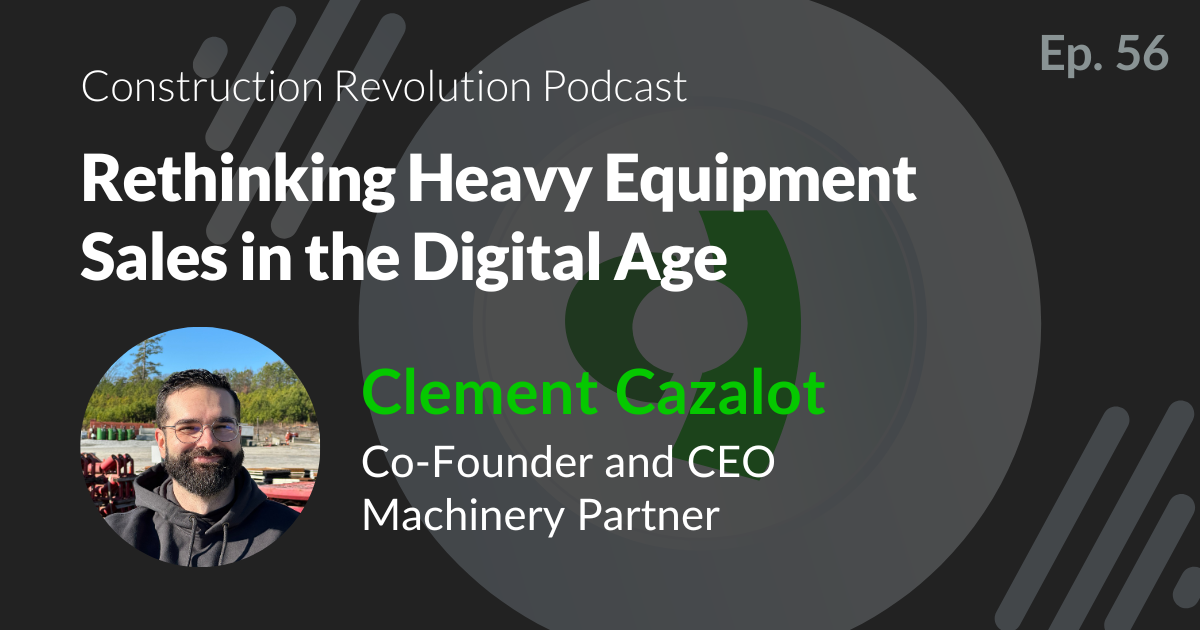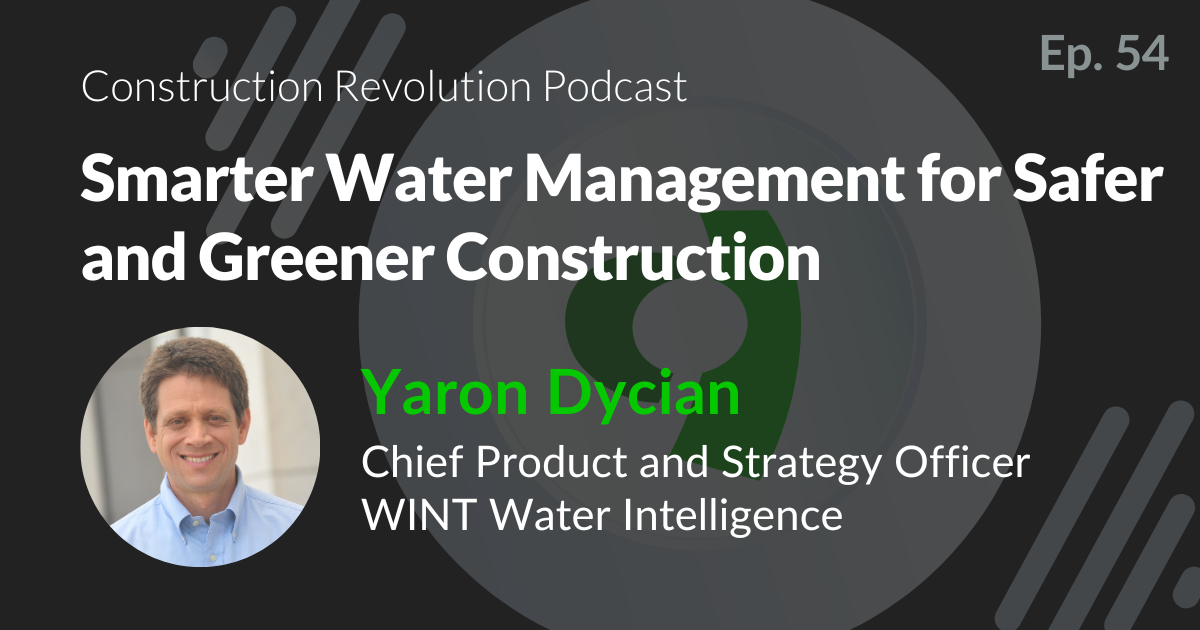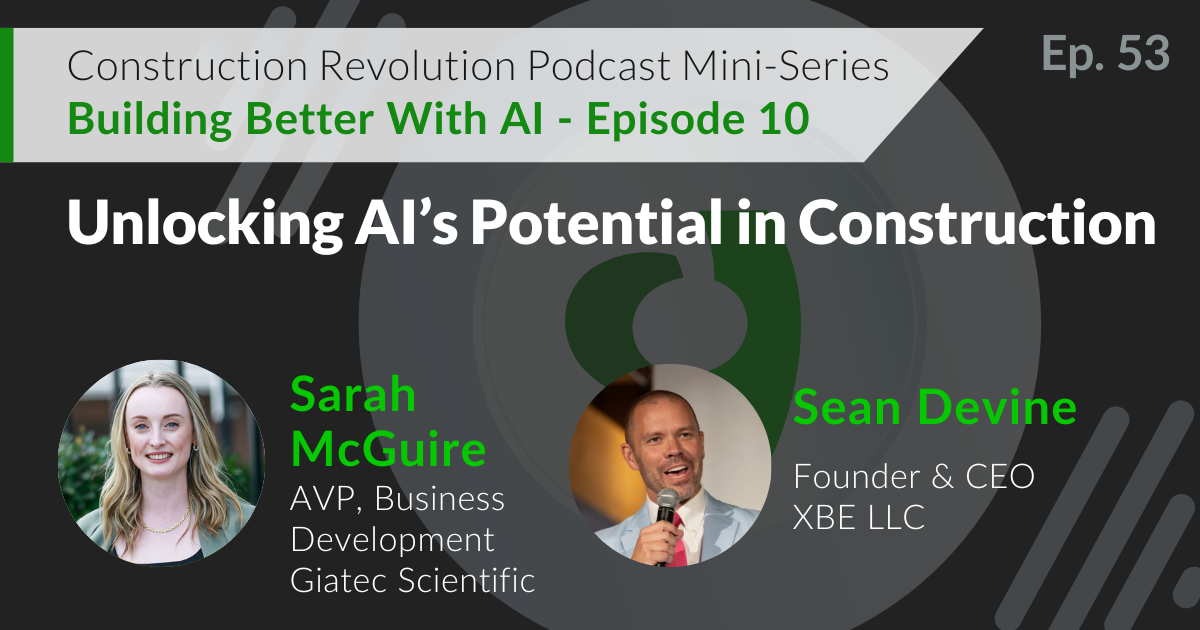
Episode 16 |
November 18, 2021
Improving Construction Workforce Productivity and Safety Using IoT
In This Episode
In this episode of the Construction Revolution podcast, Daniel Pifko, VP North America at WakeCap details how the company offers an industrial IoT solution designed to improve safety, efficiency and productivity for construction companies. By using a network of integrated sensors to connect the job site with a proprietary patented wireless mesh network technology, WakeCap can help manage the construction site workforce and reduce the scheduled risk while also offering huge leaps and safety for the workers.

Host
DR. AALI R. ALIZADEH
Co-Founder & CTO, Giatec Scientific Inc.
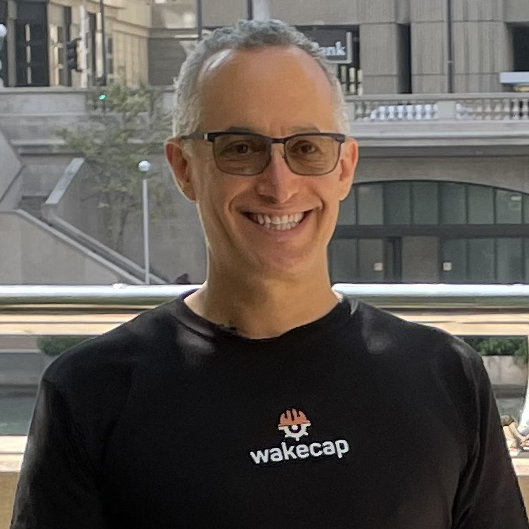
Guest
DANIEL PIFKO
VP North America, WakeCap
Podcast Transcript
Dr. Aali R. Alizadeh:
Hello there and welcome to the Construction Revolution podcast. My name is Aali Alizadeh and here on the show, we explore the latest trends, technologies, people, and organizations that are revolutionizing or disrupting the construction industry and are changing the way the industry would look like tomorrow. Today on the show I’m speaking with Daniel Pfiko, the VP North America at WakeCap. WakeCap offers an industrial IoT solution designed to improve safety, efficiency and productivity for construction companies. By using a network of integrated sensors to connect the job site with a proprietary patented wireless mesh network technology, WakeCap can help manage the construction site workforce and reduce the scheduled risk while also offering huge leaps and safety for the workers.
So hi, Daniel. Welcome to the podcast. So we are happy to have you here today with us and we have the chance to discuss a bit about your background in WakeCap and how you’re changing the construction industry and digitizing revolutionizing the way that job sites are operating. So to begin, can you please tell us a little bit about WakeCap and when did you start this company and what is the main product offering that you’re bringing to job sites?
Daniel Pfiko:
Yeah. So let me answer this, first of all, Aali, thank you for having me. It’s always good to speak to others trying to improve how we build using new technology. So thank you for that. So what WakeCap does is we help companies to improve how construction sites operate to improve productivity, reduced schedule risk, to improve safety, using internet of things, ultimately by giving better visibility into how the job site works. So where people around the job site, how that compares against the plan, all that kind of good stuff. The company started about, it was a little bit over four years ago.
It was an offshoot of the founder’s PhD program on the east coast of the US and there are three, the founder Hassan, and then two other people as well, Ishita, who’s our COO and our chief technology officer as well. I joined myself about two years ago. I had been working with another company beforehand offering engineering services to WakeCap being the elves in the back room. But I really liked the story, liked what they were doing and I joined just shy of two years ago and since then we’ve had just tremendous success.
Dr. Aali R. Alizadeh:
Awesome. Thanks Daniel. So you have different products. I was looking at your website, it seems that there’s a suite of IoT products that you are offering to the market. Can you explain a little bit about how the suite of products that you have as part of this IoT package can help with real time location services, RTLS works and how is it used to track data basically in job sites?
Daniel Pfiko:
Yeah, well, the key thing to keep in mind is we started off wanting to get better information about where people were on the job sites so that you could maybe automate attendance, so no more punch cards or brass pieces, or even foreman writing on iPads when people arrived, it’s just subject to a lot of error. So automating that, figuring out whether people were in the right place where the plan had them, the right crews, or when you’re a GC, and you’ve got a sub or a vendor who’s offered up, I don’t know, 400, 800 people or 800 worker hours, did they actually deliver it? That’s really what we were going for. And so we provide reports on a weekly basis to the construction managers and the supervisors and the superintendents, depending on the site for cost control, to reduce waste, to improve efficiency, to reduce risk.
To make that happen, with any big data company will tell you that you need to have data. We were not happy with any of the pieces of hardware that were out there. We had some experience in IoT and so we ultimately had to invent our own hardware, which is what we did to be able to get at the data to give people the results. So we’re not really a hardware company. But we had to do stuff. So with that in mind, what we do is we install, I guess, at the heart of it, on the back, with just a standard hard hat, we pop off the standard ratchet knob. This one’s a 3m. We support a number of others as well. But we pop off the standard little plastic tightener, replace it with this piece of plastic and electronics and antenna and battery. And it’s got a couple different things in it. It has, of course, the wireless communications.
And I’ll talk about that in a sec. It has the ability to locate on the job site and not off the job site. And it’s super, super light. It weighs less than one ounce or for comparison, which I think under 20 some odd grams. For comparison, the weight of the brim, going from the duck bill to the full surround brim, that weighs more than this piece here. It’s battery operated. The battery lasts somewhere between a year and a year and a half, depending on the usage. Okay. On the job site itself, the question was, how do we get location on the job site? How do we get communications across the entire job site, whether you’re up high or are underground or surrounded by metal, and how do we respect the worker’s privacy? We wanted to get a reasonable balance between making the job site work better and respecting the individuals.
And so what we came up with is we install a wireless mesh network. So this is what we call an anchor, it’s battery operated, you put it in a few places around the job site, and it does two things for you. Number one, it gives you those communications. We put them in, we survey the job site, we make sure that the area is completely covered and if it’s not, we can just move those guys around pretty quickly and easily to make sure you have a hundred percent coverage. And then the second thing it gives you is location. So we locate the workers based on figuring out the signal strength from the hard hat to several of those anchors that are surrounding you. And those are in known locations. We pull in the blueprint for the job site.
We put them as dots on a map. We actually install them. Super easy to do. Just got a bunch of holes here. You can zip tie them, screw them in, bolt them in, weld a little thread on, put a magnet on, attach it to an HVAC system, a whole bunch of different ways of doing that. And by putting those in the right way, then you are also able to get the location down to the range of, oh, about 10 yards, kind of in that at ballpark, depending on how densely those are located and for the purposes of productivity and for the purposes of safety for evacuation or fall detection, things like that, that’s pretty much what we need.
Dr. Aali R. Alizadeh:
Awesome. So that’s very exciting. The hard hat that you just showed it seems to be very user friendly. The operation and the usage is not going to interfere with the regular day to day activity of workers on job sites and the communication is Bluetooth between the node and the gateway, or you’re using a different type of communication?
Daniel Pfiko:
Yeah. Sort of. So it uses a Deadstock Bluetooth hardware. So we are on the Bluetooth bands, which means it’s safe. It’s unlicensed. We can work in multiple different countries. It has all the benefits of battery life that you get out of Bluetooth. It has the distance and all the benefits that you get out of Bluetooth. We actually run a different protocol on there, through our friends at Wirepass, which is it gives you a lot of advantages for an industrial setting that we really need on the construction site.
Resilience to a lot of interference is better at managing power. The way we do mesh networking is different than how Bluetooth does it, which means that you got this crazy long battery life. I mentioned the year to year and a half on that. I think I missed the battery life on this with standard D batteries is something like four years. It’s nuts, but we don’t actually have the little Danish king Bluetooth logo, because we do some things that aren’t officially Bluetooth branded, or get that certification, but for an industrial setting, that’s what we need to do. It’s also nice. It gives people a lot of confidence that it’s a safe technology, which it is.
Dr. Aali R. Alizadeh:
Can you detect the level, say in a multistory construction job site, can you also detect what floor the workers are at and so on and so forth?
Daniel Pfiko:
Yes, very much so. So right now, we’ve got about… What’s the last number? We have about 27 million worker hours under the hard hat. So we’ve had to deal with a lot of… And I know it’s an indirect answer to your question, I’ll answer that in a sec. The short answer is yes, but we’ve had to deal with a lot of these problems or a lot of these questions, let’s say, to get to those 27 million hours and 27, 28,000 workers, whatever it is and how we do that in a lot of these other things, but how we do that for the levels is like I said, we pull in the blueprints, whether it’s a big horizontal project or a big vertical project, or a density packed area, like a power plant for an oil refinery, we put in multiple levels.
We geo reference them. We say what height each of those levels of the blueprint are at. And then on each level, we put up a bunch of these anchors and we can sense whether or not the anchors that are closest to you are the ones that kind of indicate what floor you’re on. We’ve tried a bunch of different things. We tried putting pressure barometer into the hard hat piece, pressure based altitude rather, and decided we there’s so much variation just because of weather that was not a reliable way of doing it and also it was chewing up battery. So we took that out, but the short answer is yes, we do that.
Dr. Aali R. Alizadeh:
Perfect. So, okay. So this is in a nutshell, in a system that can be easily deployed to locate workers on job site and as you mentioned, they can tag them based on their, I don’t know, it’s a subcontractor or different types of activities to be able to monitor and sub segment that kind of sort of data and your clients, the general contractors or subcontracts who are using this may have different pain points. There’s efficiency, lack of data, productivity, safety concerns. What do you find is the main value proposition of getting a system like WakeCap installed on a job site for contractors?
Daniel Pfiko:
Productivity and safety. Those are the two main categories. Pricing safety is always difficult. I can’t say other than OSHA, fine or safety fines, which is not really the only… If you’re already getting to the point where you have fines, then things are much more wrong than just a hard hat can solve. So the ROI on that is squishier, but also very important, especially if we’re working with oil and gas, where there are serious explosion concerns and evacuations that we need to assist with. The biggest reason that general contractors buy us, or the biggest reason that owners now are starting to mandate us in their RFQs and equivalence is about improving. It usually comes that there is a particular productivity problem that they have experienced and they want to solve.
And by getting people on the site connected up with this, we solve the first problem and then later on, they find out, well, hold on a second, if we can slice and dice the data differently, then you can actually solve these other three or four problems. So simple things like where is my crew compared to where I planned? Here’s a good example. How much time does my crew spend in the Northeast corner of the 30th floor, where they’ve been allocated for that day, and what percentage of their time do they take to get up there? Then the people on the site, once they have a score, turns out they spend 75% of their time, or 60% of their time in that area and then the CMs or the foreman or whoever will adjust the site.
Well, did it work? Unless you’ve got something like WakeCap, it’s very difficult to tell. We can tell you that if you put in faster hoists, it changed the percentage of time you got to spend there. There was one site where there was something blocking one of the hoist doors that was causing workers to have to go to the floor above or below to get on and on the way back, they would have to do the opposite. That slowed things down. You got crews where the foreman is spending a significant amount of time away from their crew and all you can see is that their productivity is going down, but you’re not sure why. That came up where was a follow on task, where someone said, all right, in our weekly meeting, where we get the reports from WakeCap, we notice from other metrics that their output, their productivity is going down.
Can you help us figure out why? And that’s what we did. And we found out that there was a high correlation between either the crew was on the ground and they were up in the work area or vice versa and for the crews where the foreman was spending most of their time with the crew, the productivity matched up. So it’s kind of like a scorecard for all those other changes. And then over time you accumulate this information and it’s a much clearer report what you can expect for time and output. So it reduces your schedule risk on the current job and then it also improves your ability to bid on subsequent jobs as a GC.
Dr. Aali R. Alizadeh:
No, thanks Daniel, that’s awesome actually, to hear that the productivity can be increased that much by using a set of actually sensors that can be installed on hard hats and knows that can be installed on the job site. And then on the safety, you mentioned that the value proposition is not as clear as the productivity, but obviously that’s another aspect of these answers that it can detect workers falling. You can get an alert to the superintendent that there’s something happening here so that they can quickly attend to that. When you talk about safety and there are protocols that job sites have to follow, and it’s pretty strict. Do you see the safety side will grow in the future and the value proposition may be more visible as regulatory bodies would accept monitoring those kinds of activities or incidents using sensors?
Daniel Pfiko:
Yes. Here’s a short story. So governments around the world are putting into place or have put in place various safety things. So for example, OSHA has this six foot rule where if you’re over a certain height, you have to be wearing a harness. Or if you’re above the ground by a certain height, you have to wear it. Then if you fall, it has to be no more than a six foot fall. Okay. Well, how do you measure that? You can measure with a rope, you obviously don’t want to toss someone over the side to see if it worked. That’s a little bit crazy, but one of the things we’re working on, because we’ve got the motion sensor in the hard hat is can we measure a fall that’s bigger than six feet.
So we can measure an amount of free fall, we can measure impact, so if there’s something [inaudible 00:17:38]. The other thing we use the motion sensor for that’s a lot more subtle is are you wearing the hard hat? So on a lot of job sites, it’s not as big of a problem in North America. People kind of got the message, but in the Middle East, we’ve got several construction sites in Dubai and [inaudible 00:17:59] in Riyadh, elsewhere in Saudi Arabia, a few other places around the world, they don’t wear the hard hats as much or they’re a little bit more lax in that. And so we have built into the motion sensor, we’ve got kind of a sliding 10 minute window. And so if there’s not regular human motion of some kind in that window, we’ll mark as inactive.
And so when you see the dot, you can either view it as dots on a map and ones where they’re moving, they’re active are green and where the inactive is red or you can get lists of what are the inactive workers. So the concept of are you wearing your hard hat, or is it on the bench beside you, instead of where it should be protecting your head? That’s important and that’s something we can measure. And honestly, a lot of the mature companies are doing that and the evacuation assistance, because they want to help their people. They want to support their people and they go well beyond the local health and safety requirements.
Dr. Aali R. Alizadeh:
Awesome. So the two aspects, productivity and safety, the different approaches from the value proposition perspective, productivity is more of a concern for the top management and the company safety can directly touch the workers themselves and could be an important aspect of what they’re basically getting out of using the system. But at the same time, it involves tracking every move that they have on the job site. And this is from the privacy perspective could be a concern. Have you heard any feedback from that side of things and how do you address the privacy concerns that workers may have in terms of tracking every activity that they have during the day?
Daniel Pfiko:
Yeah, well, this is the elephant in the room with tracking. This is the thing that have I heard of it? Only in roughly a hundred percent of conversations. Yes, of course. It comes up every single time and I actively seek out discussions with either union leaders or workers or individuals and they come in with their fangs bared and their hackles up and we talk about things. Now we’re going for something which we loosely call the reasonableness test. Okay. If I say to someone on a job site, when did you arrive today and when did you leave? No, one’s going to say, hey, that’s private man. That’s how we pay you. If I say to someone, hey, we had you allocated to work in this section.
Are you over there right now? You’re not going to say, hey, where I work is my business. Obviously that’s the job of the foreman. It’s the job of the CM or whoever it is on the job site or the site engineer to deploy people in the right way. So that’s reasonable to say, hey, where are you? We have no microphone, we have no camera. I would not phrase it as we track every movement, because that’s not really what we do. Down to a granularity of are you moving or are you not? Are you in the zone down to about 30 feet, 10 yards give or take? That we do. We’re not watching your every move. We are trying to do something that’s reasonable. And then to back that up, literally I was involved in the decision of which wireless technology to go with, and there are many, many, many out there.
We built privacy into the decision matrix literally from day one, like literally on the first day when we’re listing these things. We wanted something that would work and that would connect. And by the way, I didn’t mention all these mesh devices, there’s one gateway computer and that speaks out to the internet. We’ll have a couple for redundancy, but that’s how we do it. Fine. But what we didn’t want was to be able to track people off the job site. Okay. So there’s no GPS, there’s no location tracking, there’s no way for us to track workers on the way home off the job site. We think that’s reasonable. And we don’t track people until they’re on the job site. Aside from the fact that GPS isn’t going to work in a metal structure, it also makes it just a little bit too tempting in sometimes to say, after the fact go back and figure out where you were and that’s not okay.
So when I have these discussions with labor leaders and with individuals where there’s some reluctance to adopt this kind of stuff, and we talk about this reasonableness, we talk about what we’re tracking, we talk about how this ties in and then by the way, not really on the privacy thing, but also on the what’s good for the worker aspect, if I can save a foreman a couple hours of reconciling job sheets at the end of every week, that’s good for them. If I can say them waiting 15 minutes in a line to get in, instead of having to tap in or sign in because that’s a big site with a couple thousand people, that’s good for them too.
Dr. Aali R. Alizadeh:
Perfect. Thanks Daniel. To add that elephant in the room question, you mentioned something at the beginning that WakeCap is not a hardware company. That takes me to actually to a question I have about this market. The market of IoT in general and the construction industry is growing rapidly. There are many IoT companies out there for developing different types of sensors, for tracking different things from equipment tracking, people tracking, ambient conditions and so on and so forth. In comparison with other companies who are trying to offer similar products, how do you differentiate yourself? Whether it’s from the hardware side to software side and how do you ensure that you are staying competitive in this crowded market?
Daniel Pfiko:
Yeah. So IoT is a very large field obviously. Immediately we’re going to separate us out from companies that do concrete sensors and curing concrete, or we’re a little bit different from some of the tools companies in a sense where they’re starting to put their devices, their drills and saws and all the machinery on a network. I actually see us working with them over time, in the same way that now you don’t care what ethernet you plug your computer into. You don’t care whether the wifi base station was made by your computer’s company or someone else’s. There are standards. So there are some parallel companies where I think we’re going to ultimately move toward the… The base level of communications will be standardized for certain applications, so maybe your tools and your personnel tracking will be on the same style of network.
I can see that happening over the years. And then you start to get some interesting coopetition effect where you could have us and the equipment makers kind of pairing enough to figure out what’s the time on tool? Who is the last person using a tool and where is it? So that’s things that are sort of IoT and in the same space, but not directly competitive. Fine. There are some other companies that are using IoT for personnel tracking. I like them. I respect them. They’re smart people. We’re going to kick their backsides. There’s no question. For lots of different reasons, starting with if you are tracking personnel… Let’s start from where we want to be. We want to be able to trust that if I’m using this for payroll, the data’s right. If I’m trusting this for my personnel tracking, it’s right.
If I’m calling a vendor on the carpet, because they’ve only supplied 400 people instead of 800 people, which is an actual example, we had one of our customers have this argument with one of their subs. It was a project director in Dubai. That’s what we want. You need to trust the data. So how do you trust the data? First of all, they have to be wearing the device. If I’m wearing a little thing that I attached to my vest or to my belt, they’re going to forget it in the truck. They’re going to forget it at home. It’s going to go through the laundry. For a hard hat, if you don’t have your hard hat on, you’re not working that day. Period.
It also helps there are some subtleties around this, like the fact that sort of away from the body. Our bodies are really good at blocking radio signal, even simple stuff like Bluetooth. And so the fact that it’s up there, the data gets through where it doesn’t that you’re with something that you’re wearing on your chest. It’s weatherproof, it’s waterproof. It works with intrinsic safety, like with blast certification. There’s a lot of that that goes on. The fact that we’re battery operated. The fact that we have an over year long battery life. Batteries are not a sexy topic. They really, really aren’t. But they absolutely are the Achilles heel of most IoT projects. If I have to have a bunch of chargers on site, or if I’m counting on my workers to charge their devices or there’s some hard hats where you have to charge it far, far too frequently, I don’t care how good your hardware is.
If it has no power, if it has no battery, it’s dead. It doesn’t work. So for all these reasons, most of our competitors fall off just on the battery piece, on the not forgetting the device, the ease of use. There’s no training. I think you mentioned this earlier, for the average worker, the training is put the hard hat on, that’s it. So you put all these together and all of our competitors ultimately fall off with one of those questions. The one thing I would say is it’s a big problem, how do you track worldwide?
There’s what, give or take, let’s say 40% of the expense of a project is on labor. It could be a little bit higher, it could be a little bit lower depending on the location. It’s a big problem to go after. And I think that overall we’re competing against the previous solutions rather than against each other. And so I’m looking forward to really breaking through into the bigger market to have most of the GCs and owners using some kind of automated personnel workforce tracking on the construction site.
Dr. Aali R. Alizadeh:
Great point Daniel. Thanks for sharing that with us. So for our listeners, if there’s a company out there who’s interested to get started with WakeCap and start using the sensor suite and the software suite, maybe on one job site and see how it goes, what do they need to get started and how they can basically reach out to you?
Daniel Pfiko:
Yeah. There are a few different ways. Obviously our website is WakeCap, W-A-K-E-C-A-P.com. I’m based in the US. I’m in San Francisco. I’m the vice president of North America. So I cover US and Canada. And then we’re looking at a couple project into Mexico as well. You can email us. I’m daniel@wakecap.com or come through the website and if you’re in a different part of the world, then we’ll route you to the right people.
Dr. Aali R. Alizadeh:
Okay. Is that decision making or processes, they can start with one project to begin and with minimum investment and see how it goes and they can scale across all of their projects. How does that process look like for them?
Daniel Pfiko:
Yeah. So first of all, it tends to work best working directly with the GC. That’s what I’d say, because they’re there for the life of a project. And that’s really where you get the benefit out of it. We work with a lot of clients and owners who mandate it to the GC. So it’s kind of that pairing. Number one. Number two, we make it very easy to get on board. Of course, just about everybody has some kind of a pilot or trial project where they try it on with a subset of the workers, whether it’s 50 workers, 60 workers, some relatively small number like that, see how it works, prove it out just past the initial sniff test, show that we’re not just a shiny object. We actually provide actionable results that make your job site work better.
And with measurable benefits on the productivity side. And then on an ongoing basis, we tend to charge per active worker per month. Companies at this stage are a little bit reluctant to get on board and do like an enterprise license. So it’s initial pilot, we’ll do a project based pricing per active worker per month and it goes up and down with the [inaudible 00:31:05] of people workers on the site. And then we can move up to either hardware purchase or enterprise wide license or anything along those lines.
Dr. Aali R. Alizadeh:
Okay. That’s actually very attractive. As they scale, they basically use more sensors and basically pay more licensing fee, which is very, I think, attractive business model for both sides. So I guess that’s all the questions we had from our side. Is there any additional comment that you’d like to share with the audience of this podcast?
Daniel Pfiko:
It’s actually a pretty good set of questions, to be honest. You covered the basics. It’s one of those things… I’ve been around for a few to use an engineering term step changes in various different industries. I’ve been in mobile phone technology for a lot of years, and I’ve seen a few and lived through a couple big change going from flip phones to smartphones was a large change in how things worked and from paper processes to digital processes. These big changes. I think we’re going through right now in generally with construction technology and specifically with personnel tracking, where’s there’s a lot of reluctance, there’s certainly a generation of people coming up where they’re more comfortable with technology and how it can be used.
So there’s a general technophilia there and I think that over the next year or two, I would love for your listeners to try it out, to see that, yeah, actually it does make things work better. This is the kind of thing where they’re going to look back on it and say, wow, we were doing this manually? Really? Why? This is so much better. It catches problems. It catches the six sources of waste, or eight sources of waste or there are various models around that in construction. This does so much of a better job without all the manual handling. I can’t believe we did that and I’m really hoping that your listeners get in touch and give us a shot and help us show you that we can make the construction site work better.
Dr. Aali R. Alizadeh:
Right on, Daniel. Thanks so much for your feedback and sharing the story of WakeCap with us and how you are changing and revolutionizing job sites. It was great chatting with you and thank you again for joining us in this podcast.
Daniel Pfiko:
Thank you too, Aali. It’s a pleasure joining you. Pleasure talking with you.
Other Related Episodes
Episode 56 |
June 26, 2025
Rethinking Heavy Equipment Sales in the Digital Age
In this episode of The Construction Revolution Podcast, we sit down with Clement Cazalot of Machinery Partner to explore how they are transforming the way that we purchase heavy equipment. Clement shares how his team is digitizing and streamlining the process of sourcing heavy machinery, making it easier and faster for contractors to get the equipment they need, without the limitations of local sourcing.
We dive into the challenges contractors face when purchasing equipment, and how Machinery Partner’s platform is providing transparent pricing, financing options, and faster delivery times. We’ll also explore the broader impact of digital transformation in construction and the future of the industry. Don’t miss this insightful episode on how innovative solutions are leading the construction equipment industry towards a more agile and efficient future.
PLAY
Episode 54 |
February 6, 2025
Smarter Water Management for Safer and Greener Construction
In this episode of The Construction Revolution Podcast, Steven Rossi sits down with Yaron Dycian, Chief Product and Strategy Officer of WINT Water Intelligence. With over 25 years of experience driving strategy and innovation at leading companies like IBM and RSA, Yaron is leading the charge in AI-powered water management solutions. Tune in as Yaron shares the story of WINT, explores the rising challenges of water damage claims, and discusses how advanced monitoring and leak mitigation technologies are shaping the future of construction. From preventing costly damages to meeting sustainability standards and lowering carbon footprints, this episode offers valuable insights into how construction companies can stay ahead in a rapidly evolving industry.
PLAY
Episode 53 |
December 12, 2024
Unlocking AI’s Potential in Construction
In this latest episode, host Sarah McGuire sits down with Sean Devine, Founder and CEO, XBE, to explore the transformative role of AI in the construction industry. With a background in logistics and technology, Sean brings unique insights into the challenges and opportunities surrounding AI adoption in construction. Sean highlights untapped opportunities and discusses how XBE is leading the charge with innovative solutions, including AskConcrete— a groundbreaking answer engine powered by decades of NRMCA data, designed to tackle complex questions about ready-mixed concrete. From identifying industry limitations to exploring what companies need to do to embrace AI effectively, Sean offers a compelling roadmap for innovation. He also shares his journey in founding XBE and his mission to optimize heavy construction operations with cutting-edge technology. Tune in to gain valuable insights into how AI is shaping the future of construction. Don’t miss this enlightening discussion!
PLAY
Want to Be a Guest Speaker, Sponsor, or Just Have a Question for Us? Fill In the Form!

